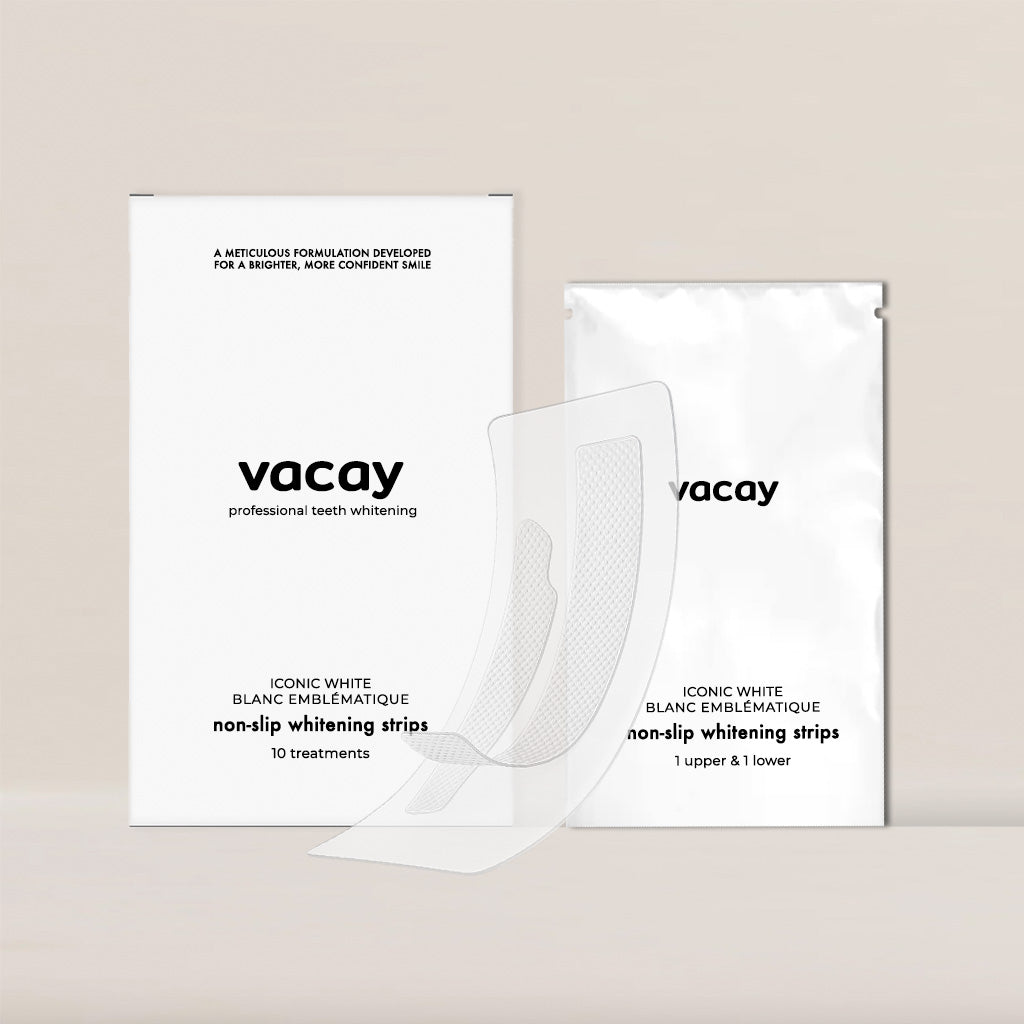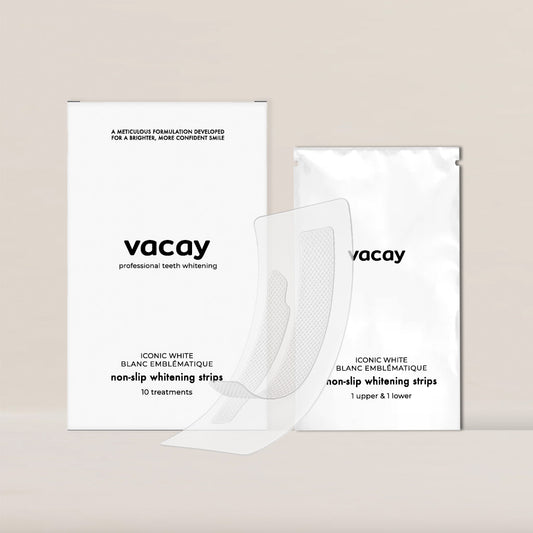
How Often Should You Use Whitening Strips for the Best Results?
Dreaming of a brighter, whiter smile? Teeth whitening strips are one of the easiest ways to level up your teeth game without a trip to the dentist. But how often should you use them for the best results—without damaging your enamel? Let’s break it all down!
What Are Whitening Strips and How Do They Work?
Whitening strips are thin, flexible strips coated with a specialized bleaching gel that gently lifts surface stains off your teeth. This peroxide-based formula penetrates teeth to eliminate stains and discoloration, making it a crucial factor in the effectiveness of the strips.
You’ll find whitening strips in different strengths and wear times—some need just 30 minutes, while others can be left on for hours. Choosing the right one depends on your whitening goals and how sensitive your teeth are!
Benefits of Whitening Strips for Sensitive Teeth
🚨 Things to Keep in Mind:
- Overusing them can cause teeth sensitivity and gum irritation. Follow manufacturer guidelines to avoid discomfort.
- Whitening strips may not work as well on deep stains or dental work (like crowns or veneers).
- Using them too often can weaken enamel over time.
Risks of Overusing Whitening Strips
While whitening strips can give you a dazzling smile, overusing them can lead to some not-so-bright consequences. Here’s what you need to watch out for:
- Tooth Sensitivity: Using whitening strips too often can make your teeth sensitive to hot and cold foods and drinks. The whitening agent can penetrate the enamel, causing discomfort.
- Gum Irritation: Prolonged exposure to the bleaching gel can irritate your gums, leading to redness, swelling, and even bleeding.
- Uneven Whitening: Overuse can result in some teeth appearing whiter than others, giving you a patchy smile.
- Tooth Enamel Damage: Excessive use can weaken your tooth enamel, making your teeth more prone to decay and sensitivity.
- Gum Recession: Overusing whitening strips can cause your gums to recede, exposing the roots of your teeth and increasing the risk of decay and sensitivity.
To avoid these risks, stick to the recommended usage instructions and consult your dentist if you experience any issues. Remember, more isn’t always better when it comes to whitening strips!
How to Use Whitening Strips Like a Pro
✅ Brush First—but Skip the Fluoride! Use a non-fluoridated toothpaste (or just rinse with water) before applying the strips to help the gel adhere better.
✅ Dry Your Teeth – Excess moisture can make the strips slip around.
✅ Apply Evenly – Make sure the strip covers each tooth, top and bottom.
✅ Watch the Time – Follow the instructions carefully to avoid over-whitening.
✅ Avoid Your Gums – The bleaching agent can cause irritation if it sits on your gums too long.
✅ Use Fluoride Toothpaste After Application – About 30 minutes after using the whitening strips, brush with fluoride toothpaste to prevent potential staining and reinforce overall oral hygiene. This can contribute to better long-term results when combined with the whitening treatment.
When Will You See the Results?
Most people start noticing a difference in about 3 to 7 days, with full results appearing after two weeks. The effects can last several months, but how long your teeth remain white depends on your habits. If you’re sipping coffee, red wine, or tea daily, you may need touch-ups sooner.
Want to make your bright smile last? Keep up with your dental routine and avoid stain-causing foods and drinks as much as possible!
Factors Affecting Whitening Results
Not all whitening experiences are created equal. Several factors can influence how well whitening strips work for you:
- Teeth Discoloration: The extent of your teeth discoloration plays a big role. If your teeth have deep stains, you might need more frequent or prolonged use of whitening strips to see results.
- Tooth Enamel: The condition of your tooth enamel matters. Teeth with damaged or worn-out enamel may not respond as well to the whitening agents in the strips.
- Gum Health: Healthy gums are crucial for effective whitening. Issues like gingivitis or gum recession can reduce the effectiveness of the strips.
- Diet and Lifestyle: Your eating and drinking habits can impact your results. Smoking or consuming stain-causing foods and drinks like coffee, tea, and red wine can hinder the whitening process.
- Whitening Strip Quality: Not all whitening strips are created equal. Look for high-quality strips with a good concentration of whitening agents and a comfortable, flexible design for the best results.
By considering these factors, you can set realistic expectations and achieve a brighter smile more effectively.
Pro Tips to Keep Your Teeth Whiter, Longer
🌟 Brush & Floss Daily – A solid routine keeps new stains away and supports your teeth whitening efforts.
🌟 Use a Straw – Helps reduce direct contact with staining drinks.
🌟 Limit Acidic & Sugary Foods – They can erode enamel and make stains stick faster.
🌟 Try a Whitening Touch-Up Pen – Perfect for quick maintenance between treatments!
Mistakes to Avoid When Using Whitening Strips
🚫 Using Them Too Often – More isn’t always better! Overuse can lead to sensitive teeth and enamel damage. The effectiveness of whitening strips depends on various factors such as lifestyle habits and proper usage, so it's crucial to follow the recommended guidelines.
🚫 Not Following the Instructions – Leaving them on too long can cause uneven whitening (hello, patchy teeth!).
🚫 Skipping a Post-Whitening Rinse – Rinsing with water after removing the strips helps get rid of any leftover gel that could irritate your gums.
Aftercare and Maintenance for Optimal Whitening Results
Achieving a whiter smile is just the beginning. To keep your teeth looking their best, follow these aftercare and maintenance tips:
- Maintain Good Oral Hygiene: Brush and floss daily to prevent plaque and tartar buildup. This helps keep new stains at bay.
- Use a Whitening Toothpaste: Incorporate a whitening toothpaste into your routine to maintain your results and prevent new stains from forming.
- Avoid Stain-Causing Foods and Drinks: Limit your intake of coffee, tea, red wine, and other stain-causing foods and drinks to keep your teeth white.
- Use a Fluoride Mouthwash: A fluoride mouthwash can help strengthen your tooth enamel and protect against decay.
- Visit Your Dentist Regularly: Regular dental check-ups and cleanings are essential for maintaining good oral health and keeping your smile bright.
By following these tips, you can enjoy a brighter, healthier smile for longer. Keep up with your dental routine, and your teeth will thank you!
How to Use Teeth Whitening Strips
Use teeth whitening strips as a simple, affordable way to boost your smile at home—when used correctly. Stick to the recommended schedule, take care of your teeth, and be patient! A brighter, more confident smile is totally within reach.
If you have sensitive teeth or aren’t sure if whitening strips are right for you, check in with your dentist for advice. Happy whitening! 😁✨




